In my poetry classes I often find myself going on about symbolic conventions and symbolic systems, especially in the context of broader discussions of figurative language, and often to point out some distinctions between symbol and metaphor, or to show why a certain set of symbolic equivalences are irrelevant to the poem at hand (colour symbolism is the worst for this, with pop-Freudian dream stuff a close second).
When I came across the following image on the Googs, I guessed it might be the product of a Japanese children’s television show. I’m not at all familiar with the aesthetic conventions of the genre, and had never heard of Domokun, so I’m not sure how or where I absorbed the aesthetic information required to make this assumption, but somehow I did:
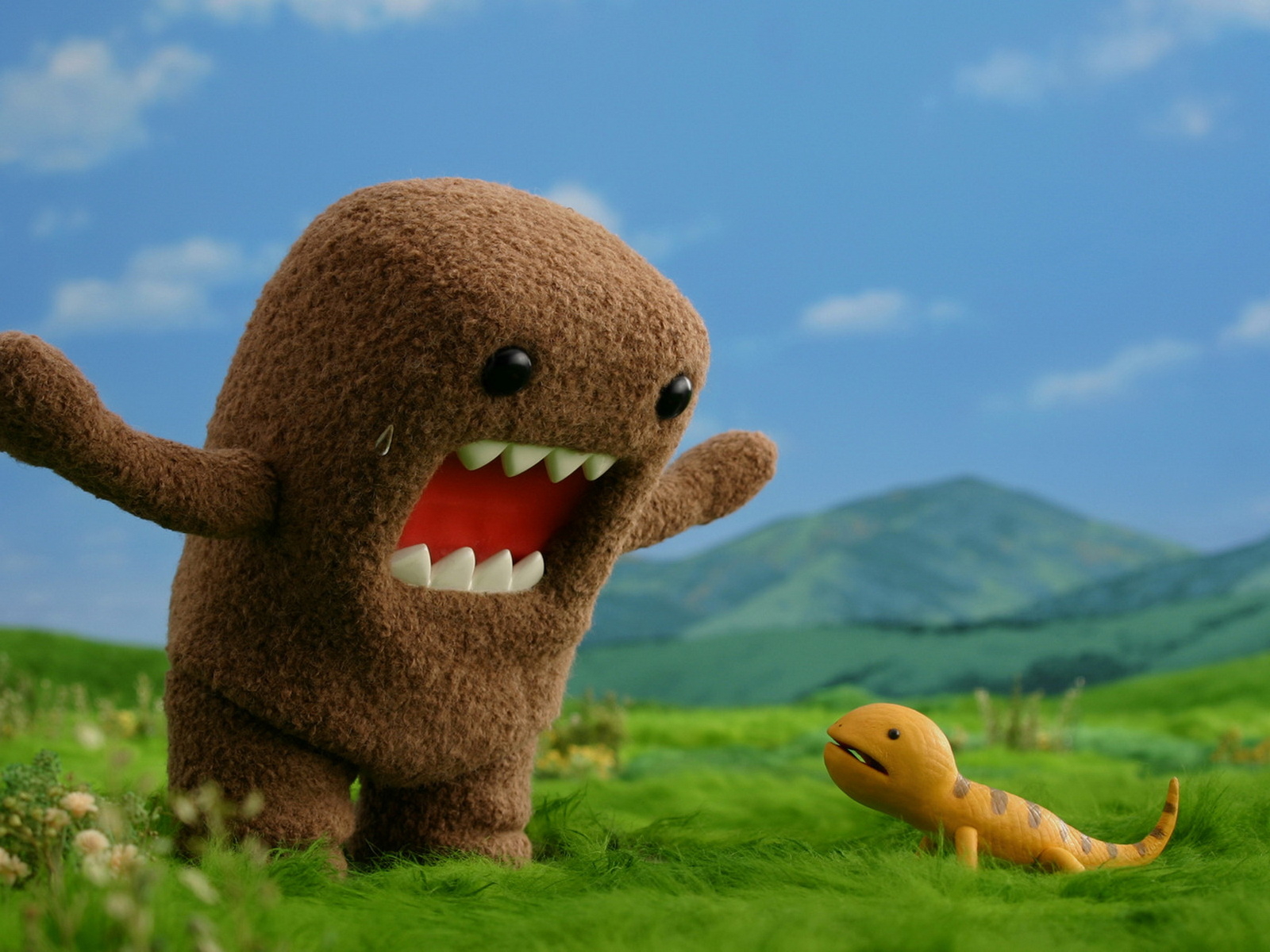
One thing I wondered was why the angry brown square was crying while it yelled at the yellow newt who was trying to get by. It occurred to me that the tear might be a permanent part of his iconography (as his bared teeth seem to be), an external symbol of his interior vulnerability or humanity.
It’s hard to know whether my next thought actually came next, or whether it was already lurking within the first (or unconsciously creating the conditions for it to occur). Anyway, at some point I thought that the tear might be a stylized borrowing from American tattoo culture (especially as it intersects with gang and prison culture), exemplified here by the NBA star Amar’e Stoudemire:
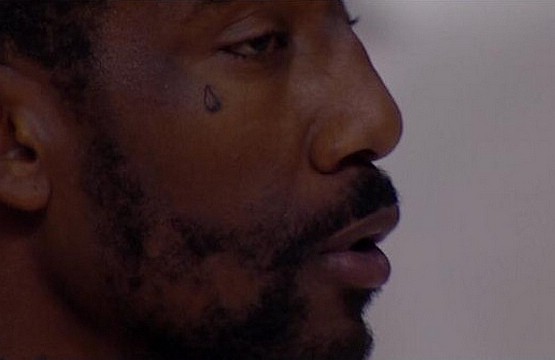
As the basketball star explained, the tear symbolizes his interior grief over the death of his older brother, one of the wholesomer potential significations of this notorious tat. Now, the Domokun cartoons are pretty violent, but not that violent, and not in a morbid way. However, cross-cultural symbol borrowings aren’t uncommon, and often they involve recontextualization in ways that appear inappropriate or humorous to people who belong to the original culture. Tattoos are a good example of this, since they trade in symbols: witness the popularity in the West of tats consisting of Chinese or Kanji characters. This blog dissects one such botched tattoo:
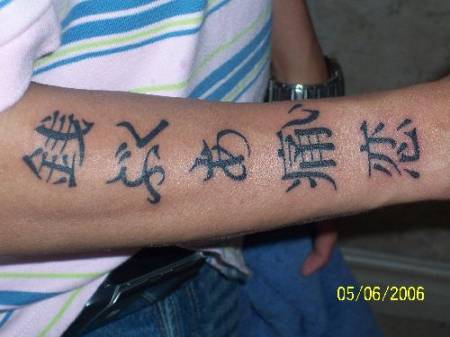
First we have an old character for “money.” One of those big ancient coins, I think. Next, “fugu,” “buku” which means “poisonous blowfish.” absolutely nothing. Next, “a.” (Just the sound “ah.” No meaning whatsoever.) After that, “ouch.” And finally, “love”. Roughly translated, this means, “I’m a complete imbecile.”
It took a little research on the Tubes to figure out the true meaning of the Domokun tear drop, which turns out to have no symbolic meaning whatsoever. It isn’t lachrimal fluid at all, but perspiration that has travelled down to where a tear would normally be found. Profuse sweating appears to be a common condition for Domokun characters, occurring at the slightest hint of consternation or effort. Here are Domokun and his mentor and cave-mate Mr Usaji sweating together during a piano concert:
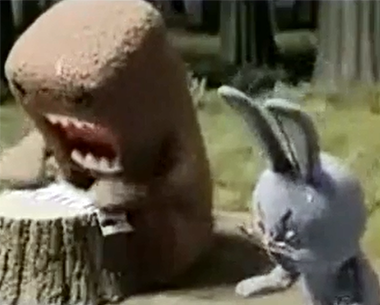
The image-still isn’t great but you may notice a bead of sweat about to drip of the top surface of Domokun’s head, and another just below Mr Usaji’s left ear. According the the wiki entry, ‘Mr. Usaji’s favorite food is carrots, and his least favorite food is “something that is meaningless.” ‘
Incidentally, Google image search is rather generous and eclectic with “Domokun”. Here’s another something meaningless:
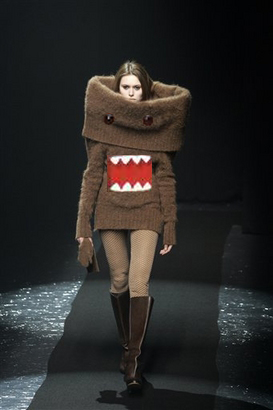
No Comments